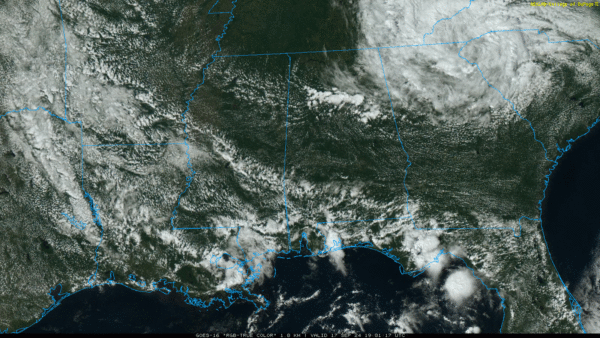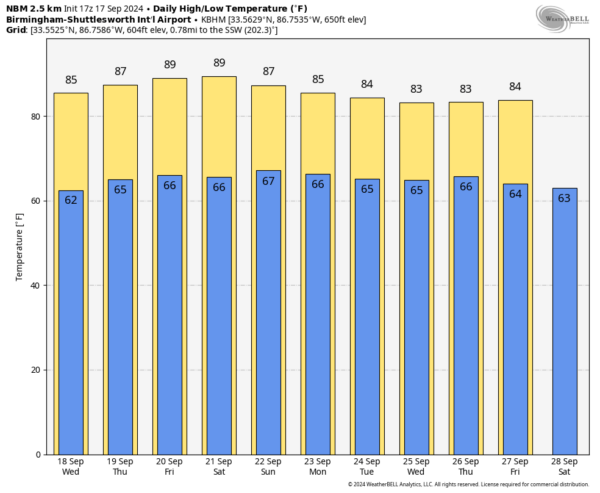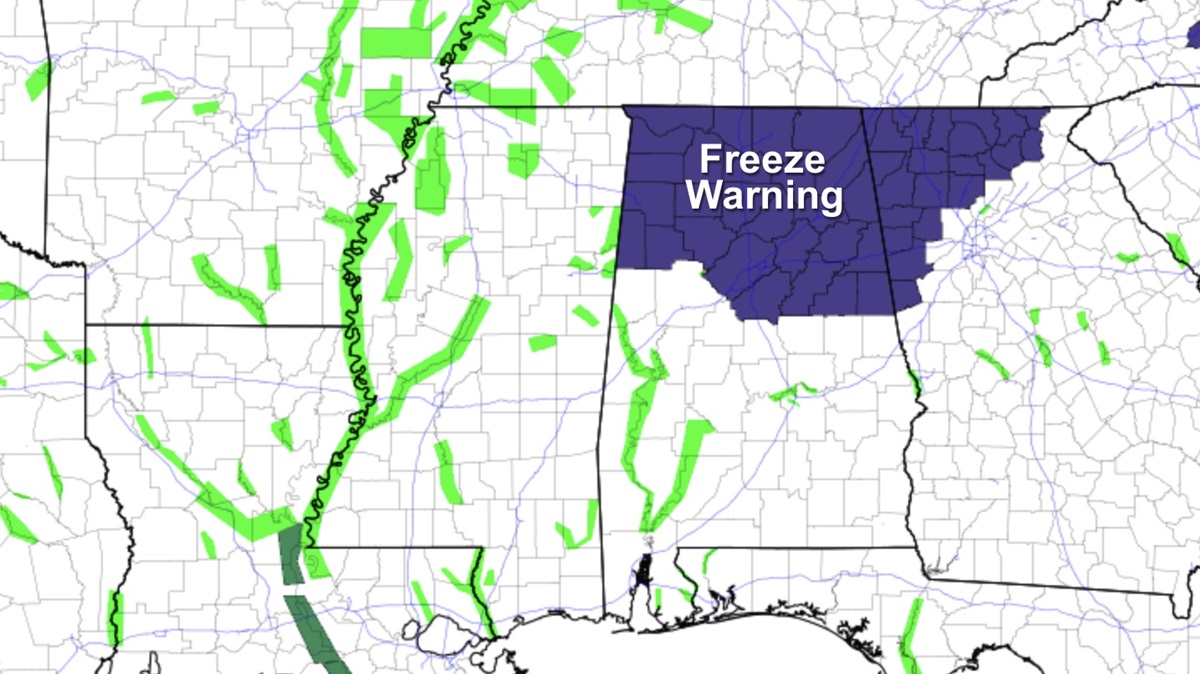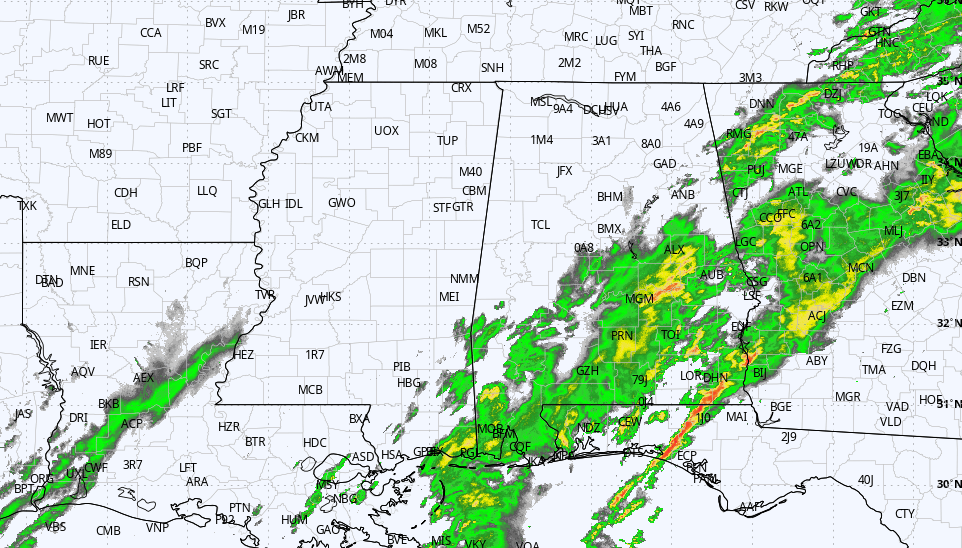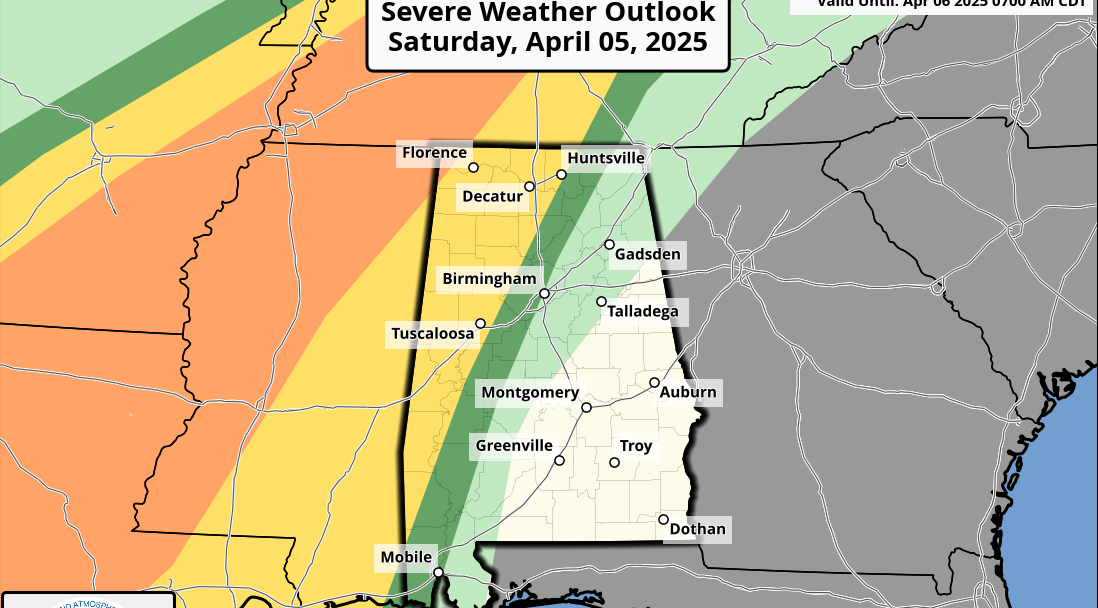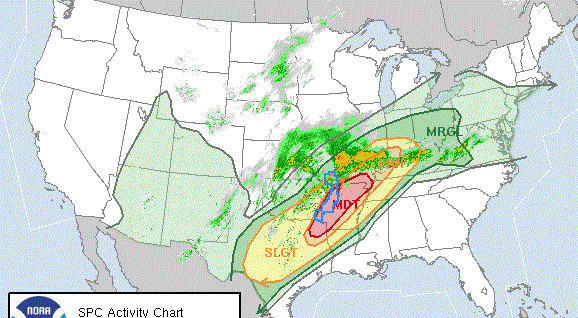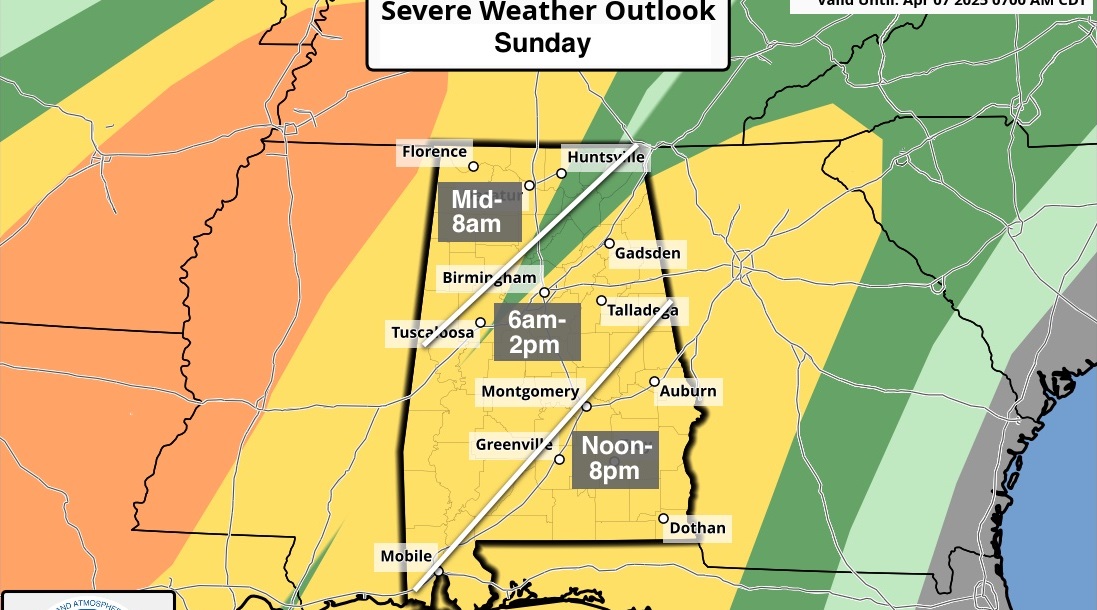James Spann: Dry days ahead for most of Alabama

RADAR CHECK: We actually have a few “illegal showers” (showers that weren’t forecast) over north and central Alabama this afternoon that are dropping southward. Also, a few spotty showers are over the southern quarter of the state (where they were forecast). Otherwise, the sky is partly to mostly sunny with temperatures in the 80s. Showers will end this evening, and tonight will be mostly fair with a low in the 60s.
We will maintain the chance of a few showers over far south Alabama Wednesday, but most of Alabama will be dry through the rest of the week with highs in the 80s and lows in the 60s. The dry weather continues over the weekend with sunny days and fair nights. Heat levels creep up, and some spots could see 90-degree warmth by Friday and Saturday.
Things won’t change much through most of next week as the dry pattern persists. Highs will be in the 80s, lows in the 60s.
TROPICS: Tropical Depression Gordon is now a remnant low in the middle of the Atlantic. The rest of the Atlantic basin remains very calm for mid-September and is expected to stay that way for the next seven days. Global models are giving some signals of tropical mischief in the Gulf of Mexico in the seven- to 10-day time frame, but there is no way to resolve whether a tropical system will actually form or where it goes.
PARTIAL ECLIPSE TONIGHT: The moon will graze the Earth’s shadow this evening, creating a partial lunar eclipse. Only a small fraction of the moon will be blocked; the peak comes at 9:44 p.m. At maximum eclipse, umbral penetration will be equal to only 8.7%, meaning that only the moon’s uppermost limb will be submerged in the Earth’s dark umbral shadow.
As the full moon closest to the autumnal equinox, this is the Harvest Moon. And this will be a supermoon. The term “supermoon” was coined by astrologer Richard Nolle in 1979 as either a new or full moon that occurs when the moon is within 90% of its closest to Earth. Since we can’t see new moons, what has the public’s attention are full supermoons, the biggest and brightest moons of the year. Although different publications use different thresholds for deciding which full moons qualify, most agree this will be the second of four consecutive supermoons (effectively tied with the full moon in October for the closest of the year).
ON THIS DATE IN 1989: Hurricane Hugo hit the Virgin Islands, producing wind gusts to 97 mph at Saint Croix. Hugo passed directly over the island, causing complete devastation and essentially cutting the island off from communications. A storm surge of 5 to 7 feet occurred at Saint Croix. The only rain gauge left operating, at Caneel Bay, indicated 9.4 inches in 24 hours. Hurricane Hugo claimed the lives of three people at Saint Croix and caused more than $500 million damage.
For more weather news and information from James Spann and his team, visit AlabamaWx.
